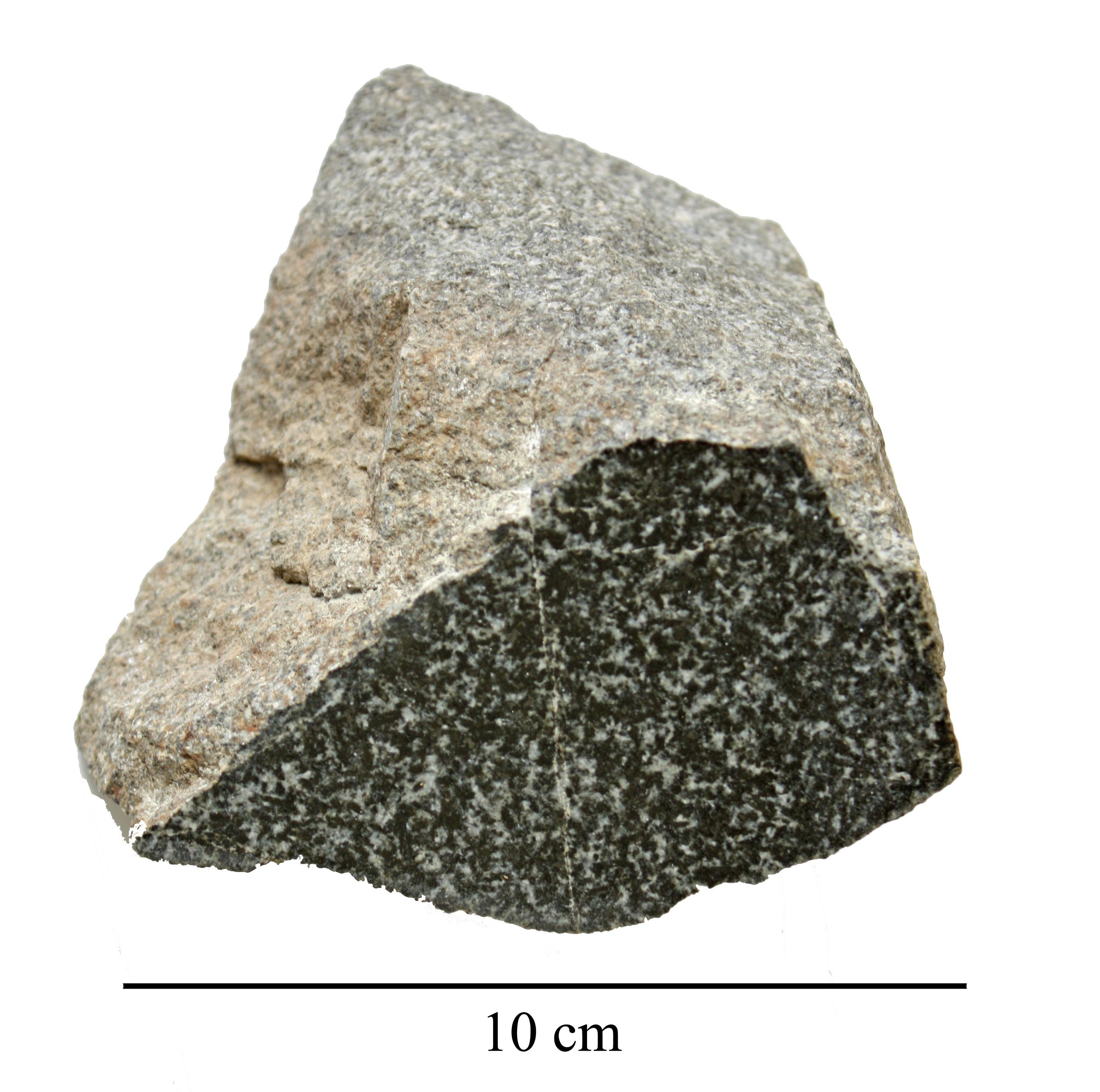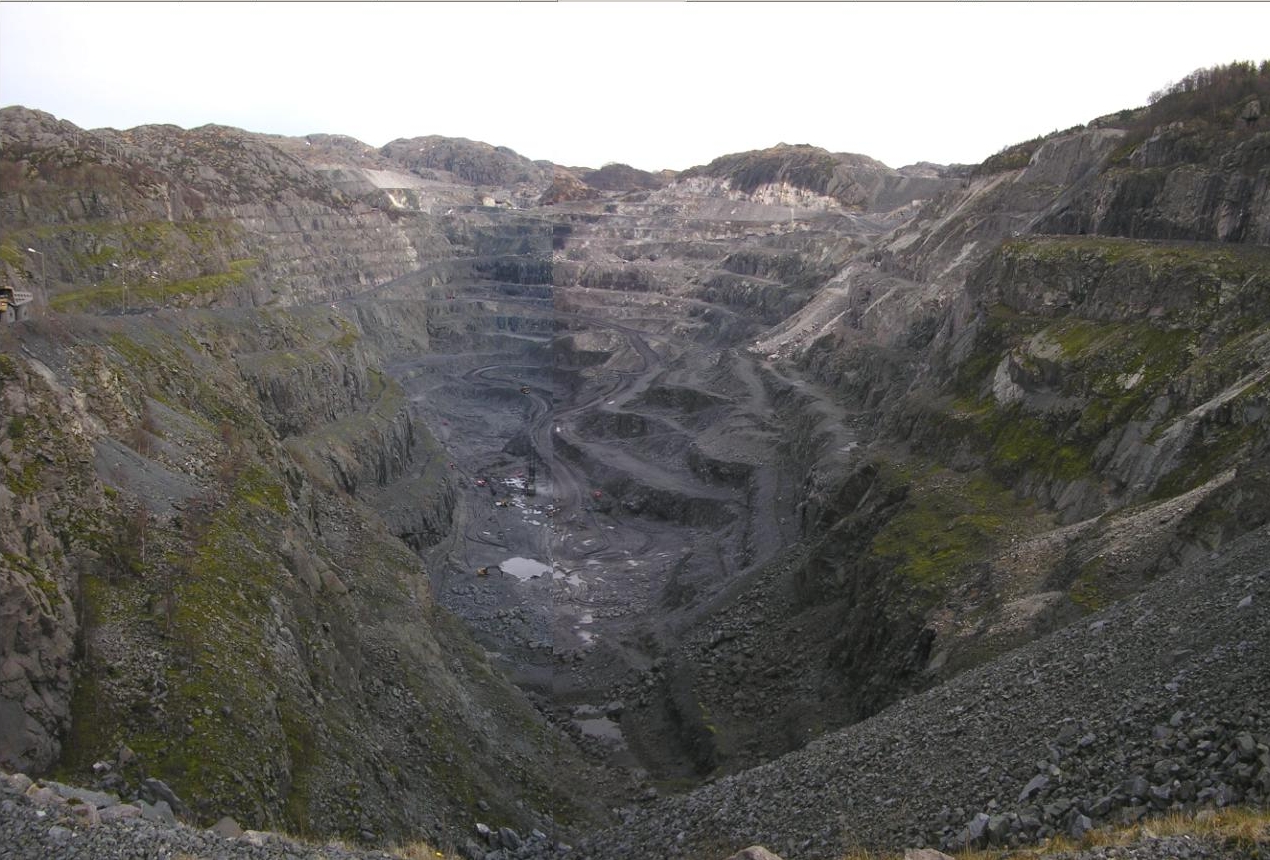|
Ulvöspinel
Ulvöspinel or ulvite is an iron titanium oxide mineral with formula: Fe2 Ti O4 or TiFe2+2O4. It forms brown to black metallic isometric crystals with a Mohs hardness of 5.5 to 6. It belongs to the spinel group of minerals, as does magnetite, Fe3O4. Ulvöspinel forms as solid solutions with magnetite at high temperatures and reducing conditions, and grains crystallized from some basalt-gabbro magmas are rich in the ulvöspinel component. The ulvöspinel component tends to oxidize to magnetite plus ilmenite during subsolidus cooling of the host rocks, and the ilmenite so produced may form apparent exsolution (trellis type) laminae in magnetite. The texture was once interpreted as indicating solid solution between ilmenite and magnetite, until the oxidation reaction and resultant textures were reproduced in laboratory experiments first described by Buddington and Lindsley (1964, ''Journal of Petrology'' 5, p. 310–357). The results are important to plate tectonics because magne ... [...More Info...] [...Related Items...] OR: [Wikipedia] [Google] [Baidu] |
Spinel Group
The spinels are any of a class of minerals of general formulation which crystallise in the cubic (isometric) crystal system, with the X anions (typically chalcogens, like oxygen and sulfur) arranged in a cubic close-packed lattice and the cations A and B occupying some or all of the octahedral and tetrahedral sites in the lattice.H-J MeyerFestkörperchemiein: H-J Meyer (ed.), ''Riedel Moderne Anorganische Chemie'', Walter de Gruyter, 2012, . Retrieved 15 April 2018. Although the charges of A and B in the prototypical spinel structure are +2 and +3, respectively (), other combinations incorporating divalent, trivalent, or tetravalent cations, including magnesium, zinc, iron, manganese, aluminium, chromium, titanium, and silicon, are also possible. The anion is normally oxygen; when other chalcogenides constitute the anion sublattice the structure is referred to as a thiospinel. A and B can also be the same metal with different valences, as is the case with magnetite, (as ), which ... [...More Info...] [...Related Items...] OR: [Wikipedia] [Google] [Baidu] |
Oxide Minerals
The oxide mineral class includes those minerals in which the oxide anion (O2−) is bonded to one or more metal alloys. The hydroxide-bearing minerals are typically included in the oxide class. Minerals with complex anion groups such as the Silicate mineral, silicates, Sulfate mineral, sulfates, carbonate mineral, carbonates and Phosphate mineral, phosphates are classed separately. Simple oxides *XO form **Periclase group ***Periclase ***Manganosite **Zincite group ***Zincite ***Bromellite ***Tenorite ***Litharge * form **Cuprite **Ice * form **Hematite group ***Corundum ***Hematite ***Ilmenite * form **Rutile group ***Rutile ***Pyrolusite ***Cassiterite **Baddeleyite **Uraninite **Thorianite * form **Spinel group ***Spinel ***Gahnite ***Magnetite ***Franklinite ***Chromite **Chrysoberyl **Columbite *Hydroxide subgroup: **Brucite **Manganite **Romanèchite **Goethite group: ***Diaspore ***Goethite Nickel–Strunz class 4: oxides Internationa ... [...More Info...] [...Related Items...] OR: [Wikipedia] [Google] [Baidu] |
Cubic Minerals
Cubic may refer to: Science and mathematics * Cube (algebra) In arithmetic and algebra, the cube of a number is its third exponentiation, power, that is, the result of multiplying three instances of together. The cube of a number is denoted , using a superscript 3, for example . The cube Mathematical ..., "cubic" measurement * Cube, a three-dimensional solid object bounded by six square faces, facets or sides, with three meeting at each vertex ** Cubic crystal system, a crystal system where the unit cell is in the shape of a cube * Cubic function, a polynomial function of degree three * Cubic equation, a polynomial equation (reducible to ''ax''3 + ''bx''2 + ''cx'' + ''d'' = 0) * Cubic form, a homogeneous polynomial of degree 3 * Cubic graph (mathematics - graph theory), a graph where all vertices have degree 3 * Cubic plane curve (mathematics), a plane algebraic curve ''C'' defined by a cubic equation * Cubic reciprocity (mathematics - number theory), a theorem ana ... [...More Info...] [...Related Items...] OR: [Wikipedia] [Google] [Baidu] |
Moon
The Moon is Earth's only natural satellite. It Orbit of the Moon, orbits around Earth at Lunar distance, an average distance of (; about 30 times Earth diameter, Earth's diameter). The Moon rotation, rotates, with a rotation period (lunar day) that is synchronized to its orbital period (Lunar month#Synodic month, lunar month) of 29.5 Earth days. This is the product of Earth's gravitation having tidal forces, tidally pulled on the Moon until one part of it stopped rotating away from the near side of the Moon, near side, making always the same lunar surface face Earth. Conversley, the gravitational pull of the Moon, on Earth, is the main driver of Earth's tides. In geophysical definition of planet, geophysical terms, the Moon is a planetary-mass object or satellite planet. Its mass is 1.2% that of the Earth, and its diameter is , roughly one-quarter of Earth's (about as wide as the contiguous United States). Within the Solar System, it is the List of Solar System objects by ... [...More Info...] [...Related Items...] OR: [Wikipedia] [Google] [Baidu] |
Kimberlite
Kimberlite is an igneous rock and a rare variant of peridotite. It is most commonly known as the main host matrix for diamonds. It is named after the town of Kimberley, Northern Cape, Kimberley in South Africa, where the discovery of an 83.5-Carat (mass), carat (16.70 g) diamond called the Star of South Africa (diamond), Star of South Africa in 1869 spawned a diamond rush and led to the excavation of the open-pit mine called the Big Hole. Previously, the term kimberlite has been applied to olivine lamproites as Kimberlite II, however this has been in error. Kimberlite occurs in the Earth's Crust (geology), crust in vertical structures known as Volcanic pipe, kimberlite pipes, as well as igneous Dike (geology), dykes and can also occur as horizontal Sill (geology), sills. Kimberlite pipes are the most important source of mined diamonds today. The consensus on kimberlites is that they are formed deep within Earth's mantle. Formation occurs at depths between 150 and 450 kilometres ( ... [...More Info...] [...Related Items...] OR: [Wikipedia] [Google] [Baidu] |
Sweden
Sweden, formally the Kingdom of Sweden, is a Nordic countries, Nordic country located on the Scandinavian Peninsula in Northern Europe. It borders Norway to the west and north, and Finland to the east. At , Sweden is the largest Nordic country by both area and population, and is the List of European countries by area, fifth-largest country in Europe. Its capital and largest city is Stockholm. Sweden has a population of 10.6 million, and a low population density of ; 88% of Swedes reside in urban areas. They are mostly in the central and southern half of the country. Sweden's urban areas together cover 1.5% of its land area. Sweden has a diverse Climate of Sweden, climate owing to the length of the country, which ranges from 55th parallel north, 55°N to 69th parallel north, 69°N. Sweden has been inhabited since Prehistoric Sweden, prehistoric times around 12,000 BC. The inhabitants emerged as the Geats () and Swedes (tribe), Swedes (), who formed part of the sea-faring peopl ... [...More Info...] [...Related Items...] OR: [Wikipedia] [Google] [Baidu] |
Ångermanland
Ångermanland ( or ) is a historical province (''landskap'') in the northern part of Sweden. It is bordered (clockwise from the north) by Swedish Lapland, Västerbotten, the Gulf of Bothnia, Medelpad and Jämtland. The name is derived from the Old Norse ''anger'', which means "deep fjord" and is a reference to the deep mouth of the Ångerman River (''Ångermanälven''). The Latin name of the province is . Administration The traditional provinces of Sweden, while remaining culturally and historically important, no longer serve as administrative or political entities. The heartlands of Ångermanland lie in today's Västernorrland County, with the remainder of the traditional province now forming part of Västerbotten and Jämtland Counties. Heraldry The heraldic description of the arms of Ångermanland is: ''Azure three Salmons naiant Argent finned Gules, the middle one counternaiant'', which heraldic meaning is that the rivers have spawning grounds for salmon, i.e. two f ... [...More Info...] [...Related Items...] OR: [Wikipedia] [Google] [Baidu] |
Dolerite
Diabase (), also called dolerite () or microgabbro, is a mafic, holocrystalline, subvolcanic rock equivalent to volcanic basalt or plutonic gabbro. Diabase dikes and sills are typically shallow intrusive bodies and often exhibit fine-grained to aphanitic chilled margins which may contain tachylite (dark mafic glass). ''Diabase'' is the preferred name in North America, while ''dolerite'' is the preferred name in the rest of the English-speaking world, where sometimes the name ''diabase'' refers to altered dolerites and basalts. Some geologists prefer to avoid confusion by using the name ''microgabbro''. The name ''diabase'' comes from the French , and ultimately from the Greek 'act of crossing over, transition', whereas the name ''dolerite'' comes from the French , from the Greek 'deceitful, deceptive', because it was easily confused with diorite. Petrography Diabase normally has a fine but visible texture of euhedral lath-shaped plagioclase crystals (62%) set in a ... [...More Info...] [...Related Items...] OR: [Wikipedia] [Google] [Baidu] |
Plate Tectonics
Plate tectonics (, ) is the scientific theory that the Earth's lithosphere comprises a number of large tectonic plates, which have been slowly moving since 3–4 billion years ago. The model builds on the concept of , an idea developed during the first decades of the 20th century. Plate tectonics came to be accepted by Earth science, geoscientists after seafloor spreading was validated in the mid-to-late 1960s. The processes that result in plates and shape Earth's crust are called ''tectonics''. Tectonic plates also occur in other planets and moons. Earth's lithosphere, the rigid outer shell of the planet including the crust (geology), crust and upper mantle, is fractured into seven or eight major plates (depending on how they are defined) and many minor plates or "platelets". Where the plates meet, their relative motion determines the type of plate boundary (or fault (geology), fault): , , or . The relative movement of the plates typically ranges from zero to 10 cm annu ... [...More Info...] [...Related Items...] OR: [Wikipedia] [Google] [Baidu] |
Exsolution
A solid solution, a term popularly used for metals, is a homogeneous mixture of two compounds in solid state and having a single crystal structure. Many examples can be found in metallurgy, geology, and solid-state chemistry. The word "solution" is used to describe the intimate mixing of components at the atomic level and distinguishes these homogeneous materials from physical mixtures of components. Two terms are mainly associated with solid solutions – ''solvents'' and ''solutes,'' depending on the relative abundance of the atomic species. In general if two compounds are isostructural then a solid solution will exist between the end members (also known as parents). For example sodium chloride and potassium chloride have the same cubic crystal structure so it is possible to make a pure compound with any ratio of sodium to potassium (Na1-xKx)Cl by dissolving that ratio of NaCl and KCl in water and then evaporating the solution. A member of this family is sold under the brand na ... [...More Info...] [...Related Items...] OR: [Wikipedia] [Google] [Baidu] |
Ilmenite
Ilmenite is a titanium-iron oxide mineral with the idealized formula . It is a weakly magnetic black or steel-gray solid. Ilmenite is the most important ore of titanium and the main source of titanium dioxide, which is used in paints, printing inks, fabrics, plastics, paper, sunscreen, food and cosmetics. Structure and properties Ilmenite is a heavy (specific gravity 4.7), moderately hard (Mohs hardness 5.6 to 6), opaque black mineral with a submetallic luster. It is almost always massive, with thick tabular crystals being quite rare. It shows no discernible cleavage, breaking instead with a conchoidal to uneven fracture. Ilmenite crystallizes in the trigonal system with space group ''R''. The ilmenite crystal structure consists of an ordered derivative of the corundum structure; in corundum all cations are identical but in ilmenite Fe2+ and Ti4+ ions occupy alternating layers perpendicular to the trigonal c axis. Pure ilmenite is paramagnetic (showing only very weak ... [...More Info...] [...Related Items...] OR: [Wikipedia] [Google] [Baidu] |



